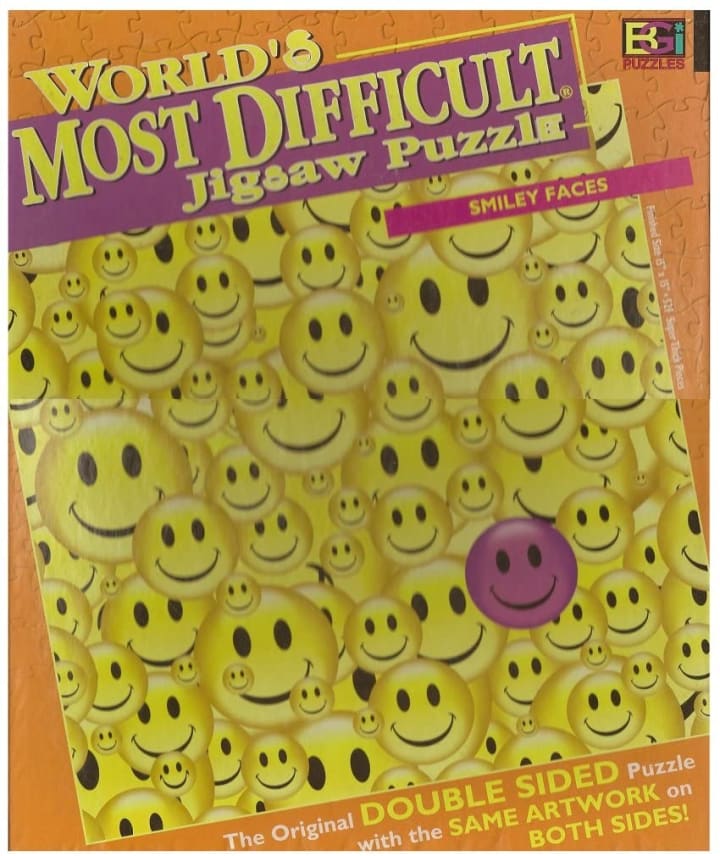Jigsaw Puzzles: Popular Activity During Pandemic Lockdown
So many people are buying jigsaw puzzles that there is a shortage.

Jigsaw puzzles have become very popular during the COVID-19 pandemic lockdown. Many people who didn't enjoy jigsaw puzzle before or who didn't have time to complete one before are now enjoying doing jigsaw puzzles. They have plenty of time to have fun alone or with family members now that they are quarantined together.
The demand for jigsaw puzzles during the stay at home orders has caused a shortage of jigsaw puzzles like it was on toilet paper, hand sanitizer, and Clorox wipes. Adult jigsaw puzzle became the eighth most popular search for item on Amazon. Local retailers had record-breaking sales before they ran out of stock.
People are proud of their finished products and are sharing them with others on their social media accounts. That is causing others to jump on the bandwagon to complete jigsaw puzzles at home with their families.
Background of Jigsaw Puzzle
What picture do you think was on the first jigsaw puzzle? Was it a portrait of the British Royal Family? Was it a scene from one of William Shakespeare's plays? Was it a religious image? Or could it have been a map? Put your thinking cap on and select the right answer.
You would be correct if you said a map was on the first jigsaw puzzle. Back in the 1760s, mapmakers in Europe had a brilliant idea. They glued maps onto pieces of wood and then cut them into pieces. Not only was the idea to make a fun puzzle, but it was also to help young people learn geography. The jigsaw puzzle was a teaching tool.
The British Library credits cartographer John Spilsbury with being the very first person to make and manufacture jigsaw puzzles in 1766. For at least two decades all the pictures were maps of British lands, the continents, and the world. The images are much different today.
Newer Images
Puzzles pieces are on cardboard and not on wood like the earlier versions. The images are no longer limited to maps of British landscapes. Instead, there are thousands of designs on jigsaw puzzle pieces. Some favorites include animals, flowers, and houses, buildings, and nature scenes.
Solving a jigsaw puzzle has a lot of benefits. The activity lowers cortisol, which is a stress hormone, and it increases endorphins. Jigsaw puzzles have become therapeutic with mental and cognitive results for children and adults. Doctors agree that working with jigsaw puzzles can help keep the brain active. The activity may contribute to reducing the risk of developing Alzheimer's disease.
Solving jigsaw puzzles has become a socially-accepted activity. Celebrities and other puzzle lovers have confessed how they are spending more time with their children as they work on jigsaw puzzles together.
World's Most Difficult Jigsaw Puzzle

My son gave me the World's Most Difficult Jigsaw Puzzle many years ago. Even though it has only 529 pieces, I have not been able to put the puzzle together because all the pieces are pictures of smiley faces. Not only does the puzzle have many of the same shapes and sizes, but also all the images look alike. To make the puzzle more challenging, the same image is on the front and the back of the puzzle. It is extremely difficult to tell which pieces belong on the back and which ones are the front pieces. Most people attempt it, but after a few minutes, they put the pieces back in the box.
The puzzle is more expensive than regular puzzles. Keep in mind that you are actually getting two puzzles in one. It is listed for $153 on Amazon. Perhaps one day I will get back to trying my hand at the World's Most Difficult Jigsaw Puzzle. For the time being, my birthday present is still in the box on the shelf because I am sticking with images of flowers, trees, birds, butterflies, and buildings.
About the Creator
Margaret Minnicks
Margaret Minnicks shares articles with readers all over the world. Topics include celebrities, royal family, movies, television, foods, drinks, health issues, and other interesting things. Thanks in advance for TIPS that are sent my way.






Comments
There are no comments for this story
Be the first to respond and start the conversation.